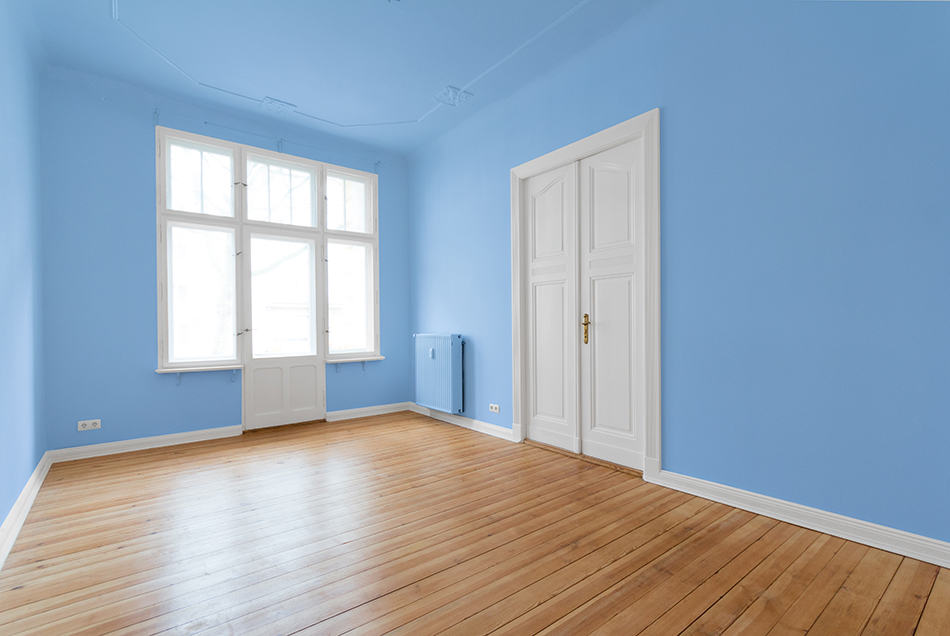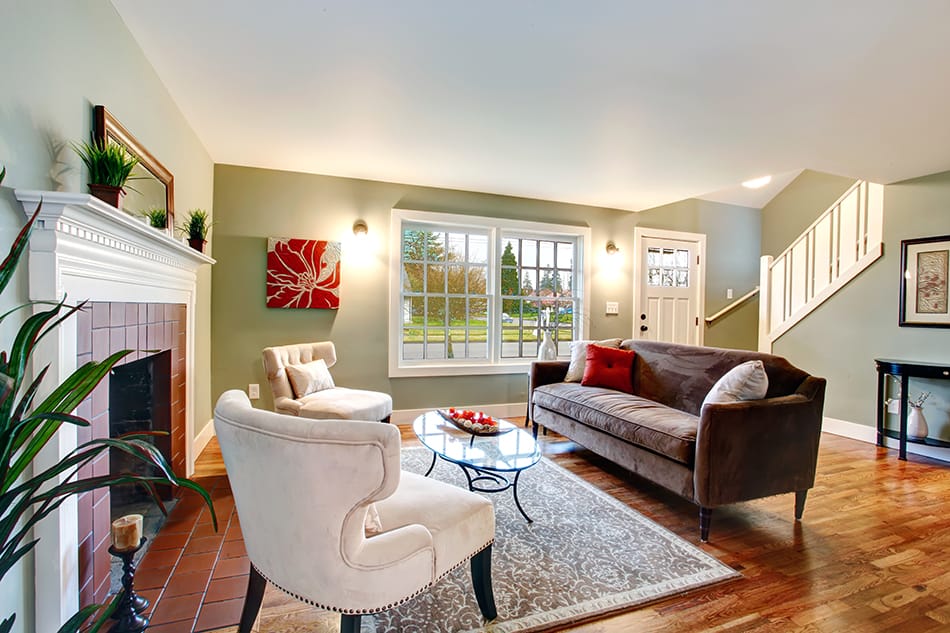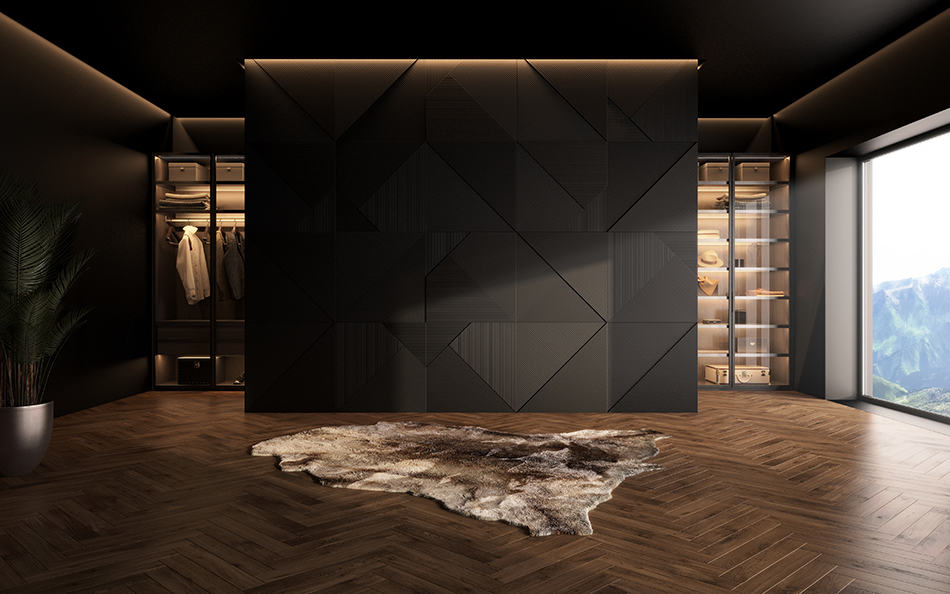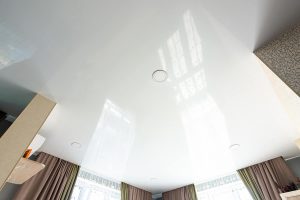For several decades white has been considered as the only color option for painting ceilings in homes, but this is a design feature that is being increasingly challenged by interior decorators. Instead, some people are choosing to paint their ceilings the same color as the walls, and it is a trend that is slowly catching on.
Most people expect that painting a ceiling the same color as the walls will make a space feel small and closed in, but in fact, it can have the opposite effect depending on which color you choose and the dimensions of the room, and the natural light it receives. Here we take a closer look at when you should paint the ceiling the same color as the walls.
Benefits of Painting the Ceiling the Same Color as the Walls
Intimate Feel
If you select a dark shade of paint or color with muted tones, then you can create a very intimate feel, even in larger rooms, by continuing the paint color on the ceiling.
The reason this can create such a cozy feel is that you will be surrounded by one color and feel enveloped by it, like being wrapped up in a blanket. This is a technique that works well in any size of room but is especially well suited to bathrooms, bedrooms, and dining rooms where a romantic or mellow atmosphere is appropriate.
Extend Ceiling Height
Painting walls and ceilings in the same color have the effect of making the walls seem taller and giving the entire room the sense that the ceiling height is higher. This is a visual trick and can actually have the effect of making the room dimensions seem bigger, which is the opposite of what many people expect from painting the ceiling in a color.
If you have low ceilings, which make a space feel oppressive, then painting the ceiling and walls in the same color can help to give the impression of a better ceiling height and help to open up the room.
Continuity
The continuity achieved when painting walls and ceilings in the same color give a space a sleek and modern vibe. This works well for minimalist and contemporary style decor and can be a design statement in itself.
Easy Decorating
One benefit of painting a room’s ceilings and walls in one color of paint is that it simply makes the process of decorating easier. If you are painting your home yourself instead of hiring a contractor, you may find that getting a straight and even edge between colored wall paint and the white ceiling can be very difficult.
Even when using decorator’s tape or carefully freehanding the edge with a cutting-in brush, most people find that it’s extremely hard to achieve a neat edge around the ceiling, and this can make a room look unfinished and uncared for. By using one color of paint, you won’t have to worry about the edges around the ceiling and will be able to achieve a more professional finish.
Hide Stains
If you smoke inside your home, or if you burn a lot of candles or have a fireplace, then you can expect your white ceiling to sustain gray smoke stains or yellow nicotine stains over time. By painting your ceiling a color, especially a darker color, you can prevent these types of stains from being seen.
When to Paint the Ceiling White
There are some instances when painting the ceiling and walls in the same color won’t be the best option and can result in the opposite effect than you intended. In fact, there are lots of wall and ceiling color combinations you choose that make your room look great.
Here are when you should paint the ceiling white. Any bright neutral colors, such as beige, or light gray, also work perfectly.
Lack of Natural Lighting
If you have a room that doesn’t have many windows or it is positioned in a way where it doesn’t get much natural light, then you should think carefully before deciding to paint the ceiling any color other than white. If a room receives little natural light, then painting the ceiling in a color can make it feel dark and gloomy.
Painting the ceiling white instead will uplift a dark room and reflect light. The exception to this is if you are trying to create a dark and moody feel in a room, for example, in a home theatre, then a painted ceiling in a room without windows will work well.
Lots of Patterns and Colors
One situation when you won’t want to paint the ceiling the same color as the walls is when a room is already very busy with a wide selection of patterns and colors. If your furnishings and decor are bold and vibrant, then a painted ceiling can be overkill and make a room feel too intense, making it a space where people don’t want to hang out.
Textured or Flawed Ceiling
Painting ceilings that are textured, or have visible cracks or other flaws in them, will only serve to draw attention to these imperfections and cause people to look upwards.
In this instance, it is best to avoid painting the ceiling in a color and instead leave it white. A white ceiling will not attract attention and will be the best way to disguise issues with the ceiling.
Tips for Painting the Ceiling the Same Color as the Walls
Avoid Bright Colors
Having ceilings and walls the same color works best when the colors are pale or dark and deep. A bright color, such as a magenta pink or a bold turquoise, can feel too intense when used on the ceiling as well as the walls. This will likely result in a space that feels like it causes headaches and eye strain rather than being a place you want to relax in.
Use the Same Paint Sheen
When painting the walls and the ceilings in the same color, you should use the exact same paint for both, including the sheen and type of paint. This will help to achieve continuity and avoid the feel of a separation between the two.








